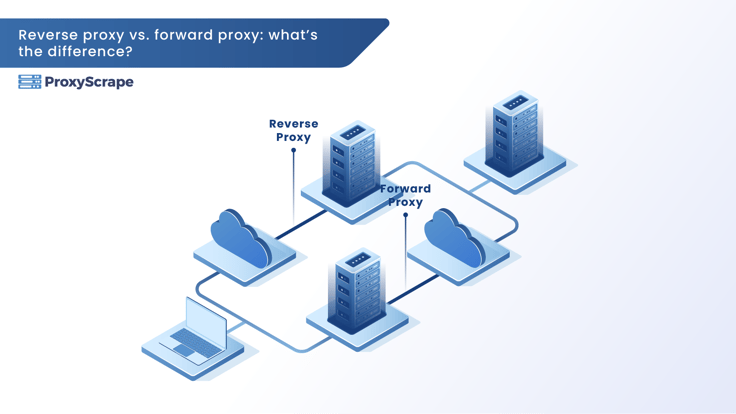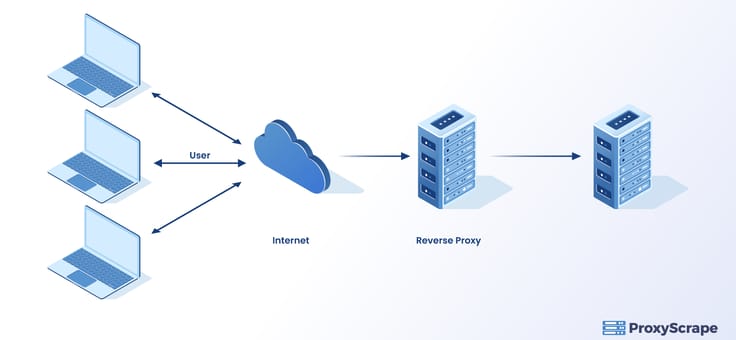Reverse Proxy vs. Forward Proxy: What’s the Difference?

Many entities already used forward proxies for their needs, but what is a reverse proxy? Well, that’s what you’re about to learn. In essence, reverse proxies serve an entirely different purpose from a forward proxy. However, the difference lies in the fact that the communication is reflected in the back-end. This means that a reverse
Many entities already used forward proxies for their needs, but what is a reverse proxy? Well, that’s what you’re about to learn.
In essence, reverse proxies serve an entirely different purpose from a forward proxy. However, the difference lies in the fact that the communication is reflected in the back-end. This means that a reverse proxy adds a layer of contact between the user and back-end servers.
This article will cover everything you need to know about the differences between a reverse and forward proxy. This will help you decide which is best for you.
Whenever you’re ready to get acquainted with the world of proxies, keep reading.
What Is A Reverse Proxy?

A reverse proxy is a proxy that acts on behalf of the web servers. These proxies coordinate access and preserve the separation between users and the origin server, preventing them from communicating.
Reverse proxy servers add a security level for the web servers since the user can not directly reach them. They are perfect for websites that have a multitude of traffic channels and many visitors. These proxies can improve web performance, secure web servers, and prevent overloading.
They are used for load balancing, SSL encryption, and caching. When using reverse proxies, web servers are not overloaded because requests have to go through the proxy, which decides what server the request should be sent to.
A reverse proxy is a perfect solution for website caching. Caching content allows websites to make use of data that has been previously received from the origin servers.
This improves website performance. Furthermore, a reverse proxy can decrypt and encrypting SSL communications, ensuring that connections on a web server are sterile and secure.
What Is A Forward Proxy?

A proxy, also known as a forward proxy, is an intermediary between a web server and a user. When somebody uses a proxy to connect to a web server, his request goes through this forward server before it is sent to the webserver.
Instead of having direct communication between a web server and a computer, the forward proxy is used to mask connections before it is sent to the webserver.
What Are They Good for?
Many reasons might constitute the use of a forward proxy. For instance, anonymity, web scraping, and geo-location freedom are some of these reasons.
A forward proxy adds a layer of safety, resulting in a hidden IP address. This is why forward proxy servers are used for ensuring greater levels of security on the internet.
Forward proxy servers can also be used to access otherwise geo-restricted content. When users are browsing the web, they might come across foreign content. When using a proxy, a user can access content from these other locations.
For instance, some companies have a hard time reaching a global market because they cannot track their ad performance globally. By using a proxy the geo-restrictions will be lifted, a company will be able to see if ads are visible in different locations.
And finally, the most common proxy use is for web scraping. Companies that gather large amounts of data for pricing, marketing, and other business decisions use web scraping to remain competitive.
Forward proxies can help monitor and control internet usage and manage and create social media accounts along with many other things.
Forward proxy vs. Reverse proxy
The most noticeable difference between a reverse proxy and a forward proxy is that the latter is used by people who want to connect to the internet without revealing their identity. This is achieved because the proxy is standing in front of their connections. Reverse proxies are executed on the side of the webserver and used to enhance the back-end infrastructure.
In essence, they are opposites in terms of connection, hence the names. Forward proxies ensure users do not directly connect with the internet. Reverse proxies ensure users do not communicate directly with the back-end.
There’s also a difference in terms of proxy usage. As mentioned earlier, forward proxies are great for web scraping, privacy, and geo-location access. Whereas reverse proxies on a web server prevent overloading, enforces SSL encryption and caching, as well as improves general safety.
Therefore, the two proxy types are used for definitely different things.
Can A Forward Proxy Run Like A Reverse Proxy?
Practically, a forward proxy cannot run like a reverse proxy. Even if the concepts for each are pretty similar, they are executed for entirely different reasons. This means they are also built-in completely separate ways.
A proxy on its own is not simply an IP address. Proxies are built with dedicated software for operation methodology and IP addresses to support their continuity.
As reverse and forward proxies are used for different tasks, they have their own software tailored specifically to their functionality and performance.
This is why a forward proxy cannot be run as a reverse proxy.
Proxies for Your Needs
Now that you know what a reverse proxy is and how it differs from a forward proxy, you are well on your way to decide which is best for you. In any case, there’s no rush to choose, and it’s only to your benefit if you do more research.
If you are looking for forward proxies for your web scraping or ad verification projects, look at our datacenter proxies here.